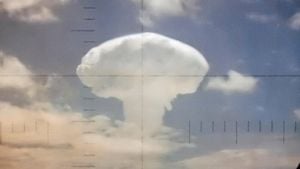Unveiling the past has always captured humankind's imagination. When archaeologists undertake digs, they don’t just sift through dirt; they unearth stories, artifacts, and secrets of civilizations long gone. Recently, remarkable discoveries from ancient sites have turned heads, adding pages to our history books. Each find speaks to cultures and events, enriching our collective narrative and deepening our grasp of ancient life.
Across various continents, researchers are making astonishing strides. Take the city of Pompeii, for example. Once buried under layers of ash from Mount Vesuvius, new excavations have revealed frescoes bursting with color, illustrating daily life from nearly two millennia ago. These artifacts don’t merely serve as decoration; they encapsulate the emotions, customs, and social structures of the Roman citizens who created them. Such vibrant storytelling has revitalized interest, encouraging modern explorers and historians to revive and analyze these narratives.
It’s not just the Romans who have left their imprint on the world; ancient Egyptians continue to fascinate. The recent discovery of a hidden tomb near Luxor has sparked intrigue among Egyptologists. Inside this tomb, artifacts like beautifully crafted jewelry and statues of deities have been retrieved, illuminating the burial practices and beliefs of the time. The significance of each item hints at elaborate rituals and the prominence of the individuals buried within their sacred spaces.
Blockchain technology is playing its part too! Some experts advocate leveraging this cutting-edge tech to maintain transparency and authenticity within archaeological sites. By logging findings onto Blockchain, archaeologists can provide indisputable documentation, ensuring artifacts remain untampered and their locations known, safeguarding these treasures for future generations. This merging of the digital and physical worlds has paved the way for innovative approaches to preserving cultural heritage.
Moving westwards, excavations at Cahokia Mounds, located near present-day St. Louis, are unraveling the story of one of North America’s largest pre-Columbian settlements. After centuries of neglect, recent studies show the scale of its society and its sophisticated urban planning, which included trading hubs and astronomical alignments. It challenges our previous assumptions about the intellectual capabilities of indigenous populations and highlights the complexity of their communities.
Meanwhile, overseas, archaeologists have returned to the legendary Silk Road, which was more than just a trade route; it was also the conduit for cultural exchange. Recent digs along the path have uncovered precious relics, such as ancient coins and textiles, leading many to reconsider how people may have interacted and influenced one another. These materials convey stories across nations, underlining human connection and the shared experiences of diverse cultures.
The advancements don’t stop with digging either. Technological innovations like ground-penetration radar (GPR) and 3D imaging have revolutionized how archaeologists work. These tools enable them to visualize and analyze sites without disturbing the soil. This non-invasive strategy not only preserves the sites but also aids researchers in forming hypotheses without interruption, enhancing data collection and overall accuracy.
Looking at these efforts collectively, it becomes evident how archaeological findings serve larger societal values. For many, these discoveries resonate deeply with identity, heritage, and connection to history. The world’s past is not just contained within textbooks; it's alive and tangible, just waiting to be explored. The stories unearthed through diligent excavation and modern technology allow us to reflect on ourselves and our societies.
One cannot help but ponder: What secrets remain buried, waiting to be uncovered? Each dig sites anew becomes more than mere excavation; they're portals to the ancient worlds, allowing future generations to witness their legacies. Who knows what remains to be found beneath the earth's surface? Exciting possibilities lie dormant, reminding us of how much richer our history is than we often assume.
One of the most captivating elements of this exploration doesn’t just rely on the past; it teaches us about stewardship and care for our planet. With every find, the archaeological community reinforces the importance of preserving these sites. Conservation efforts are underway globally to protect these treasures, driven by collaborations among governments, historians, and local communities. This cooperation guarantees these sites not only survive but thrive.
Among the backdrop of discoveries across the globe, there’s also increased engagement with the public. Archaeologists today recognize the significance of sharing their findings, ensuring the general populace appreciates these contributions to history. Interactive exhibits, educational programs, and virtual reality experiences bring ancient worlds to life. These initiatives engage younger audiences, fostering interest and inspiring the next generation of historians.
One cannot overlook the transformational power of storytelling through these archaeological treasures. Each artifact sings its lore, creating opportunities for writers, filmmakers, and artists to bridge past with present. Several documentaries and literature have garnered attention for shedding light on these finds, translating ancient whispers to current dialogues. This narrative shift not only preserves ethnic heritage but also highlights universal human experiences—life, death, creativity, and resilience.
To wrap it up, the marriage of modern technology and age-old exploration might forever alter how we view antiquity. The stories we tell today are intertwined with the relics unearthed from our past. Whether through artistic representation or scientific advancement, the call to know and cherish our history becomes more pronounced than ever.
So next time someone invites you to explore the ruins of history, take them up on it! Engaging with antiquity is not merely academic; it’s about connecting—connecting with those who walked before us and shaping how we view our present and future.



